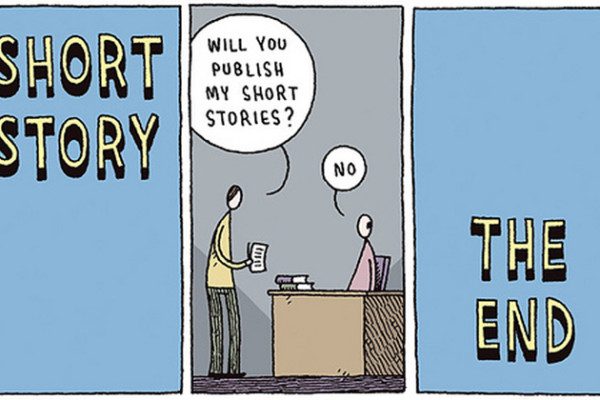Author: Sue Monk Kidd
Tinder Press
In a small cellar room, Handful’s mother is recovering from the soul-crushing punishment inflicted by their owner Mrs.Grimke. On bad days, Handful’s mother shivers through the night. But one quiet, dark night, Handful is woken up by her mother, “Awright, I gon tell you a story. You listening, Handful?”
Handful dutifully listens to the stories of her grandmother’s journey from Africa, taken away from her parents and sold to a slave owner. Handful is enthralled by stories of nights when “stars fell out of the sky,” and when her grandmother would sew figures into quilts to remember her home and her family- figures of blackbirds flying, to remind her of the prospect of freedom and equality. Handful, however, is intrigued by the story of the ‘spirit tree.’ Generations of Handful’s family have bound their spirits to trees so that the spirits may live with the “birds, learning to fly.” This night of storytelling infuses Handful with hope and strength, values that characterised the victims who survived the widespread racial subjugation that was prevalent in the early 1800s.
The Invention of Wings is set around this time, celebrating the courage and constancy of those who hoped for freedom, while exposing the brutality and helplessness of others. It stands as a remarkable recovery of narratives by Sue Monk Kidd who is interested in the silenced history of the time. She delves into this history to uncover the trauma of the slaves, as well as those who were persecuted for supporting abolition. The invocation of ‘wings’ as a symbol for freedom is one that Kidd first explored in her bestselling debut novel The Secret Life of Bees which was made into a popular movie of the same name. Flying, you see, stands for the simplest expression of liberty.
In the same estate that Handful yearns for freedom, Sarah Grimke, daughter of a wealthy aristocratic family suffers from a debilitating stutter. Even as she tries to speak out against the cruelty inflicted on slaves owned by her family, hoping to free the slave given to her by her conservative mother as a birthday present, Sarah is constantly silenced and berated. She is reminded of her lonely Aunt, and told to not express her opinions for the fear of not procuring a suitor. The novel alternates between the voice of Sarah and Handful, as the flip sides of the same struggle for freedom and equality.
Kidd clarifies in her Author’s Note, that she means to pay respect and acknowledge the path-breaking efforts of Sarah Grimke of Charleston, who faced great condemnation from her own hometown for adopting the Quaker faith and expressing Anti-Slavery views at a time when women were only meant to concern themselves with coming-out parties to attract suitors and maintaining appropriate standards of silence. Kidd draws from historical accounts of Sarah Grimke and her sister Angelina who were shamed and rejected by religious and social institutions for being too radical and even mocked by members of their own family. It is interesting to look into the personal histories of the two Grimke figures even though they have been almost actively removed from mainstream. Sarah is introduced to us, a young girl who wishes to play her part in ending the suffering of the slaves in her home. As a child, she promises Handful’s mother that she will free Handful, without realising the revolutionary implications of the promise. The novel is pivoted around this childlike understanding of humanity to bring out the cracks in the violent discrimination against the slave population in southern United States of America, where Kidd herself grew up and currently lives.
Sarah and Handful’s tabooed friendship endures the length of the novel but it isn’t one without conflicts or distances. It is one that stands for respect, protection and a promise of loyalty. While Sarah willingly protects Handful, when she is forbidden to free her from the family and in turn teaches Angelina to do the same, Handful stands for the ‘voice’ of hope that inspires Sarah. Handful tells Sarah, “My body might be a slave, but not my mind. For you, it’s the other way round.” The cover of the novel illustrates the narrative of Handful’s endeavours and relates her wish to find her mother, of being free with her family, of flying.
Divided into five parts, the novel spans 30 years, albeit slow-paced in certain parts, carrying forward the dual narrative as both Sarah and Handful strive for independence. While Sarah’s narrative is filled with uncertainty and nerve-wreaking sadness, Handful’s narrative in slave-dialect is fierce and defiant, with endless hope infiltrating both despite the pain. The episodes of slave punishment are described in disturbing detail with a tone of detached horror, invoking helplessness, both voluntary and involuntary, of the slave-owning population. The sewing of the quilt becomes a metaphor for a parallel narrative of the silenced slave history. Handful writes of her mother, “She wouldn’t say what happened to her with words. She would tell it in the cloth.” Handful’s mother, just like grandmother, sought to tell stories through the quilts, reminding us that despite being denied education, stories of suffering and loss are always expressed. The competence lies in the skill of the reader to identify them and therefore respect them in their silence. More often than not, the silence isn’t the absence of these stories but an intimation to look elsewhere. The novel is wrought with references from historical events, figures of Civil Rights Movements, published works of Sarah and Angelina Grimke, along with slight allusions to other literary works that protest against slavery.
The novel appropriately ends on a note of optimism, a journey towards a possible freedom. Sarah’s narrative describes herself and Angelina as two wings, waiting to fly but threatened to be cut off. Sue Monk Kidd creates this modern-day retelling of the brutality of slavery, which shifts the focus from event-centred narratives of history into the personalised emotional life histories of individuals caught in a vicious web of violence.














